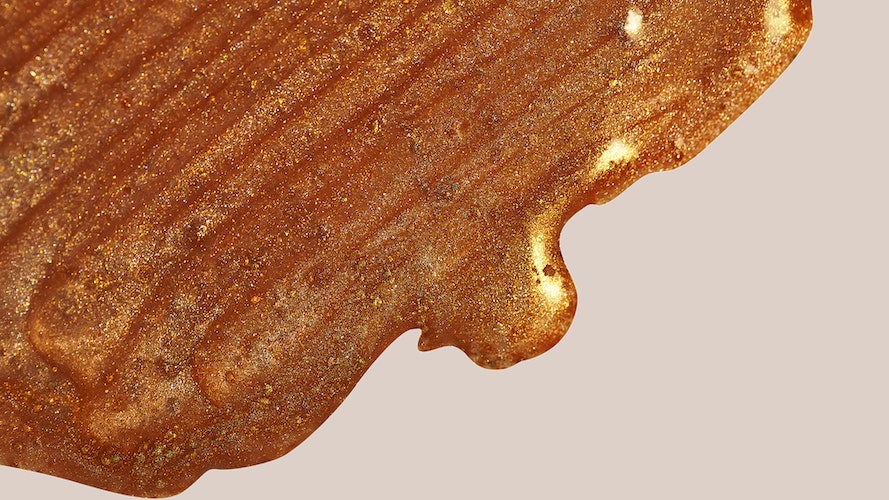Everything You Need To Know About Skincare’s Most Controversial Ingredient, EGF
[email protected] | July 26, 23

Lately, it seems like skincare has become more playful — sometimes seemingly for the sake of its Instagram potential. While we’re certainly not opposed to photo-worthy face masks, we still approach trending skincare ingredients with scrutiny — especially when they promise serious results. Such is the case for Epidermal Growth Factor, an ingredient that is making a name for itself as one of the biggest anti-agers since retinol.
If the name alone sounds complicated and chock-full of science, well, that’s because it is. So, we went ahead and distilled the need-to-know facts on the trending skincare ingredient — including where it comes from, how it works, and why it can be somewhat controversial.
What Is It?
Epidermal Growth Factor (EGF) is a type of protein that naturally resides in human skin cells. Specifically, it’s an amino acid chain responsible for cell regeneration, which ultimately helps to keep skin plump (in conjunction with our other favorites, collagen and elastin). Alas, just like those other naturally-occurring skin plumpers, your EGF levels decrease over time. Luckily, this protein can be applied topically and absorb into skin. Once absorbed, it binds to what are called EGFR, or EGF receptors, to trigger new skin tissue production.
Where Does It Come From?
EGF can be derived from a number of living things. (It can also be made in a lab; more on that later.) According to celebrity facialist and founder of Joanna VargasTM Salon and Skincare Collection, Joanna Vargas, EGF can be extracted from “plant, animal or human cells that mimic the cells of where it’s being applied or where it was cloned from.”
If the idea of extracting and cloning sends a shiver up your spine, you’re not alone. Depending on who you ask, harvesting EGF can get dicey. “It tends to be controversial,” Vargas explains, “because of where it’s [often] derived from.” She cites fibroblasts (cells) from animal placenta and human foreskin as two of the most polarizing derivation sources. To be clear, this does not mean that the actual foreskin and placenta cells are floating around in your serum — rather, the cells are taken and cloned. Still, though, the initial extraction process turns some people off.
How Was It Discovered?
EGF isn’t exactly new. In fact, Dr. Dendy Engelman reckons it has been used in skincare for at least a decade. (Incidentally, it was first used for wound healing half a century ago, when scientist Stanley Cohen won a Nobel prize for its discovery). One plausible reason for its recent popularity surge is the rise in Korean Beauty — a sector of skincare that is, arguably, always one step ahead of the U.S. markets. K-Beauty has been infusing EGF into plenty of products before many statesiders had even heard of the stuff (try EasyDewTM Ex Repair Control Active Soothing Serum, $55).
Another — albeit smaller — popularity push could be attributed to celebrity esthetician, Georgia Louise, who unintentionally sensationalized the ingredient. One of Louise’s signature services, the EGF facial, relies on protein from the foreskin of infant boys (her celebrity clients dubbed it the “penis facial” et voila, everyone was abuzz).
Is There A Vegetarian Version Of EGF?
For anyone who is spooked by applying human and/or animal matter on her décolleté, there’s plant-derived EGF, which has proven possible through barley. Furthermore, scientists have managed to create non-living EGF replicas. This method doesn’t involve extraction and is much less expensive to produce. And, according to Dr. Engelman, the lab-made version delivers the same benefits: “[EGF replica] has the same amino acid sequence and 3-D structure as the human EGF,” she assures. “Hence, this protein can easily detect and bind to human EGF receptors on human cells.”
Is EGF Worth The Hype?
In short, yes — which is why you’ll notice it’s infused into high quality, professional-grade skincare. For example, SkinMedica® TNS Essential Serum® ($281) features a blend of growth factors, cytokines and matrix proteins, including EGF. With consistent use, skincare experts say it can soften the appearance of wrinkles and fine lines. Moreover, EGF supports collagen levels, Vargas notes. That makes it an excellent choice for post-laser, at home skin care.
Should I Use It?
If you want your skin to look younger for longer, go right ahead, Engelman advises. Similarly, Vargas recommends anyone over 30 — or anyone concerned with skin aging — should give it a whirl. Vargas believes in EGF so much, in fact, that the esthetician created a face mask spiked with plant-derived EGF (The Twilight Face Mask, $75). If you’d prefer a serum spiked with EGF, consider Dear® by Renee’s Skin Renewal Serum, ($80), which — in addition to EGF — contains a peptide which claims to reduce the muscle contractions responsible for wrinkles.
Lastly, rest assured that EGF should be viewed as a boost to your pre-established skincare routine, not a replacement. There’s no need to ditch your beloved night creams. As much as we love trying interesting new ingredients, we’ll always have a place in our medicine cabinets for the classics (like retinol).
SkinMedica® is an Allergan-owned product line.
Allergan may receive commissions for purchases made through links in this article.
Products were gifted to the author for the purpose of writing this article.






